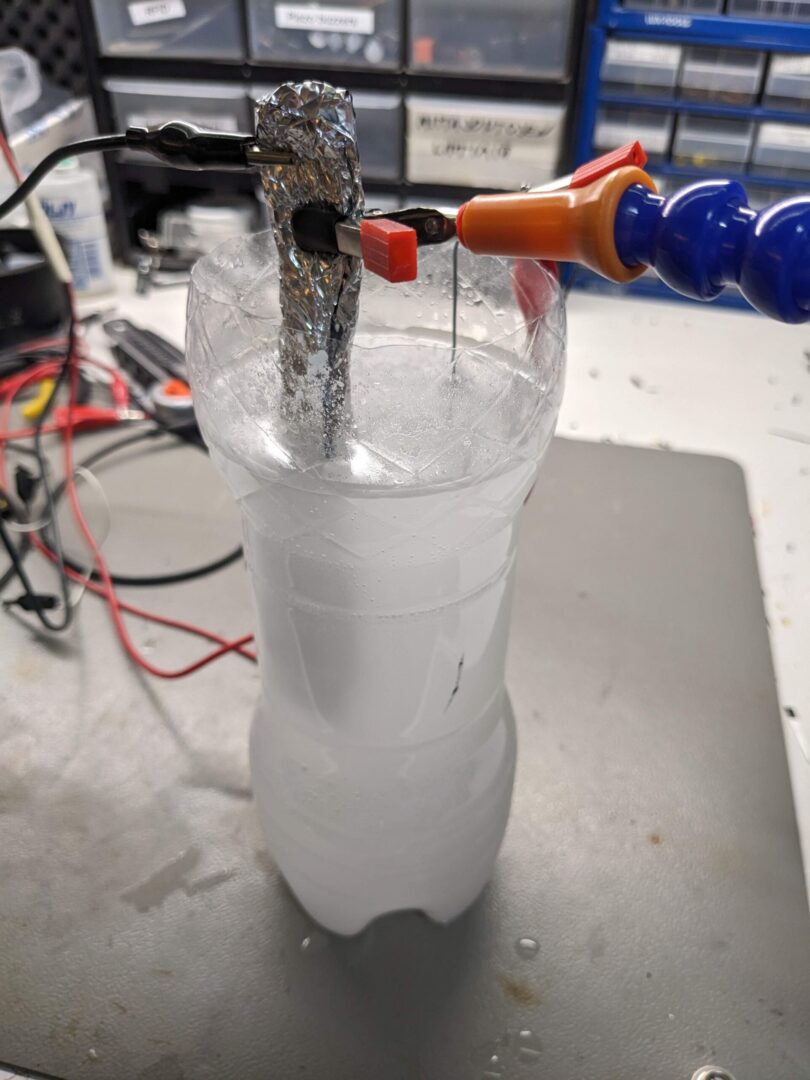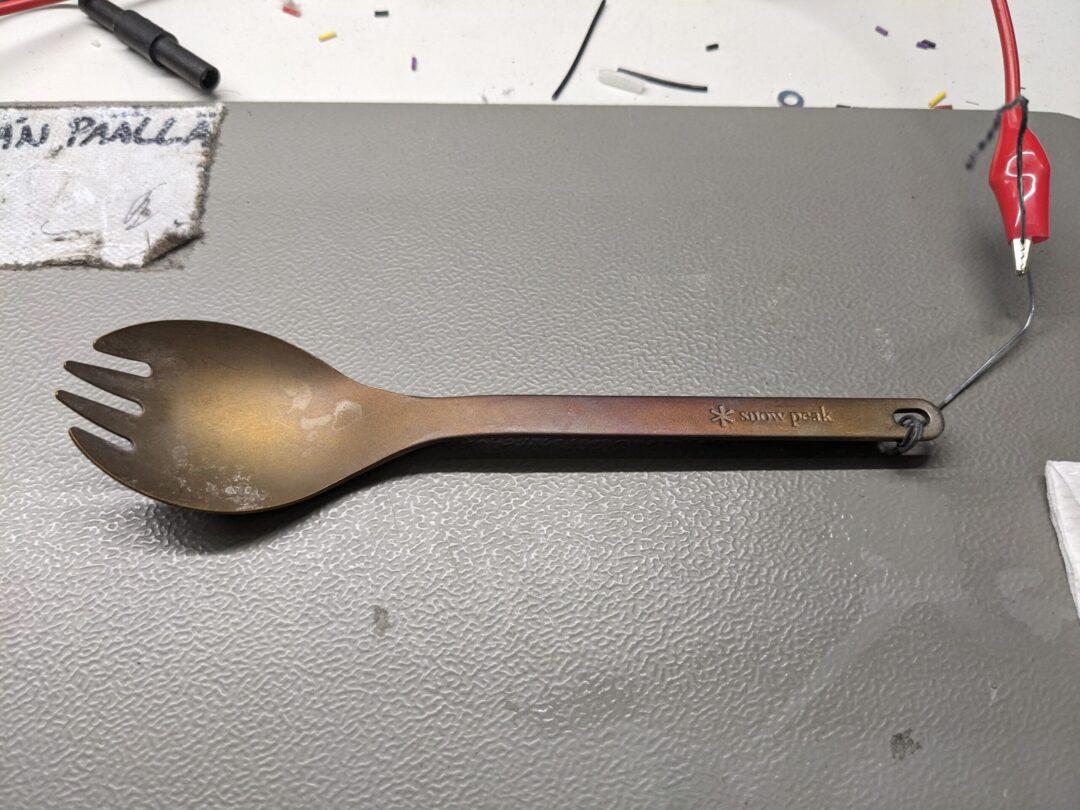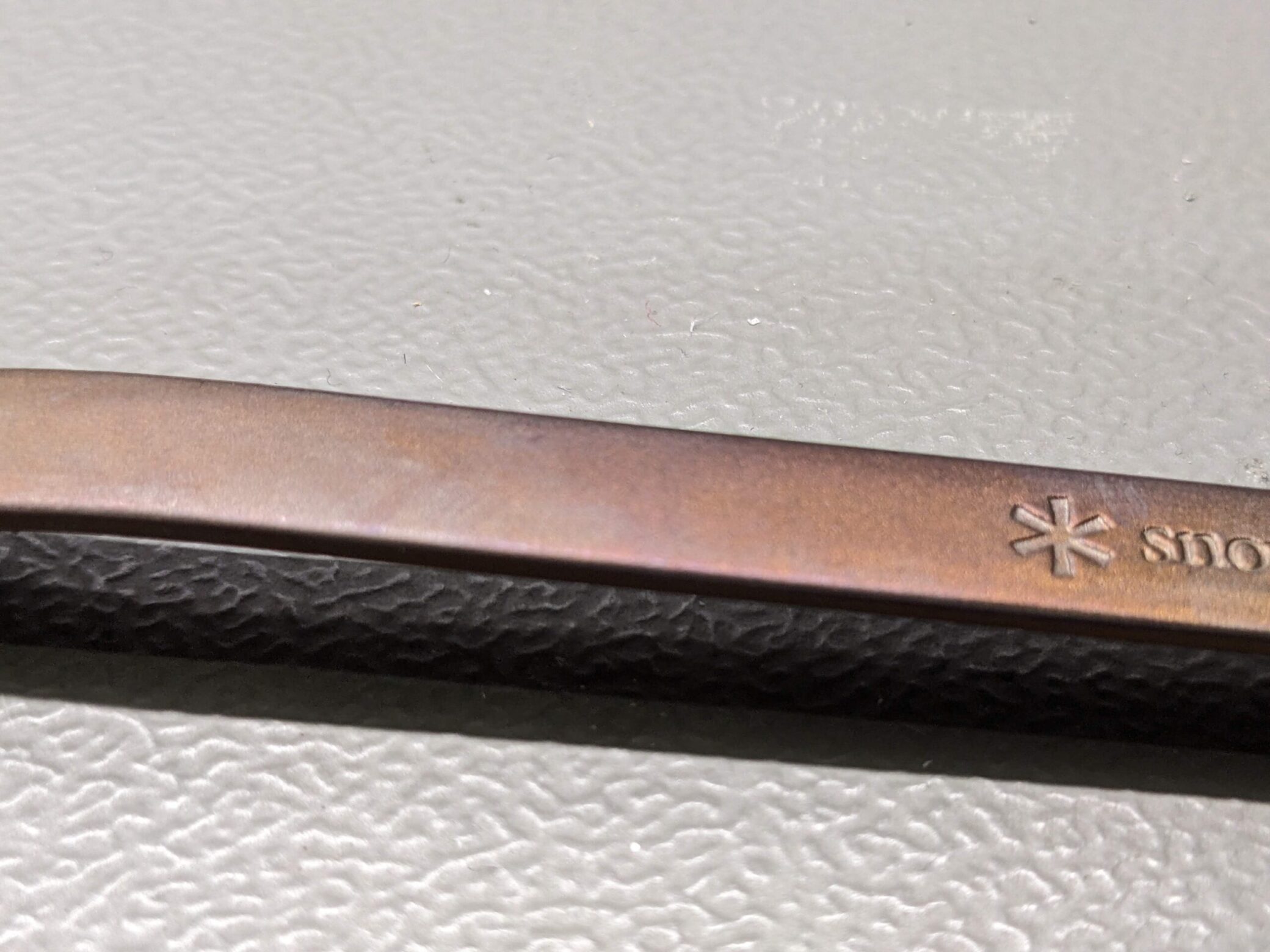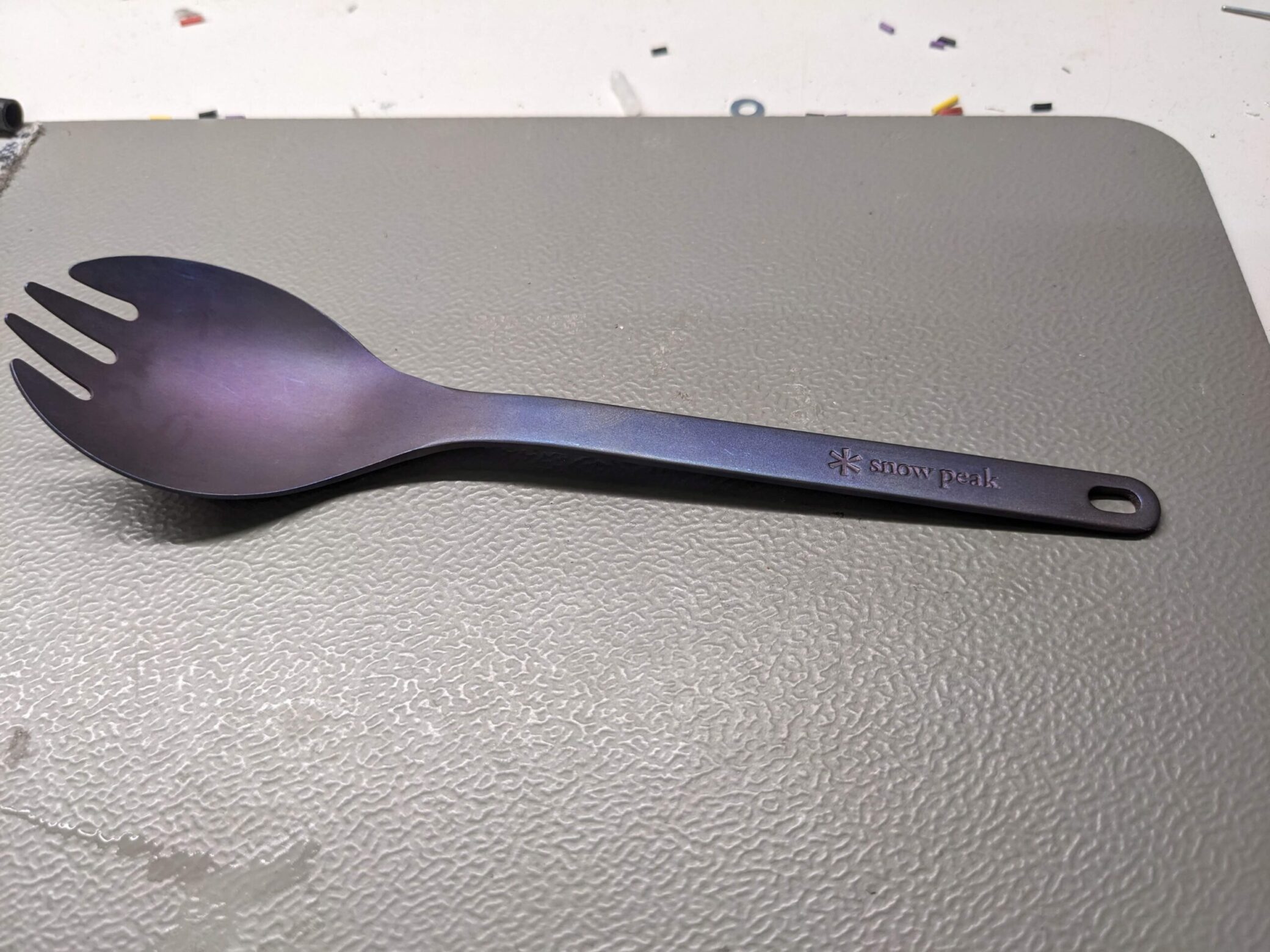Anodizing a titanium spork
As I was cleaning my titanium spork, a fellow hacker encouraged me to try to anodize it. This is a process that, for science reasons, changes the colour of the metal.
It is particularly simple and effective for titanium, so figured it could be fun to try and promptly gathered the necessary supplies and got started.
All I needed was a container of some sorts, an electrolyte solution (in this case, water with baking powder) a power supply and something to act as a cathode (I grabbed some scrap aluminium foil).
I hung the spork off of some wire which acted as both a mounting solution and a conductor. Using some flexible arms with alligator clamps, it was simple to have the spork and the cathode submerged in the solution.

The titanium was connected to the positive terminal of the power supply to act as the anode, and the cathode to the negative.
Now we are ready to anodize! We started off with a lower voltage, and gradually ramped it up to see what colours we would get. Anodized titanium comes in a range of colours which simply varies with the voltage applied. The first noticable colour is a sort of gold or copper colour. After a few minutes at 12 volts and then at 14 volts, (as far as I can recall, anyway) I pulled it out to take a look. Quite nice!

The stains come from the solution. I didn’t clean it properly for the picture. The colour is quite interesting. It’s unlike a regular coat of paint since it reacts with light in a strange way, and with my setup, at least, the oxide layer was probably a bit uneven, causing slight variations in colour.

However, consulting a chart online led me to want to pursue a different colour. At 18 volts, the spork should turn purple.
I noticed that some parts of the spork, especially the flat surface of the spoon were not getting a full coating of colour. I experimented with hanging it upside down and also with partial submersion. This did result in better coverage of the spoon, but I think ultimately full submersion and letting it anodize for longer would have been fine, too. Partial submersion caused some lines to appear where it stuck out of the water, but it’s not really noticeable from a distance. I also cranked the voltage up to 18.4 volts by the end, to see if I could get a deeper colour. This created a slight blue sheen on parts of the spork, as blue is the next colour in the range after purple.
Here is the final result:

I’m quite happy with this, and it was fun to try out a new process that was surprisingly easy. If you have some titanium items lying around you should give it a try! There are plenty of tips and tricks to find online. Just make sure the anode and cathode don’t touch each other!

comments
Add comment